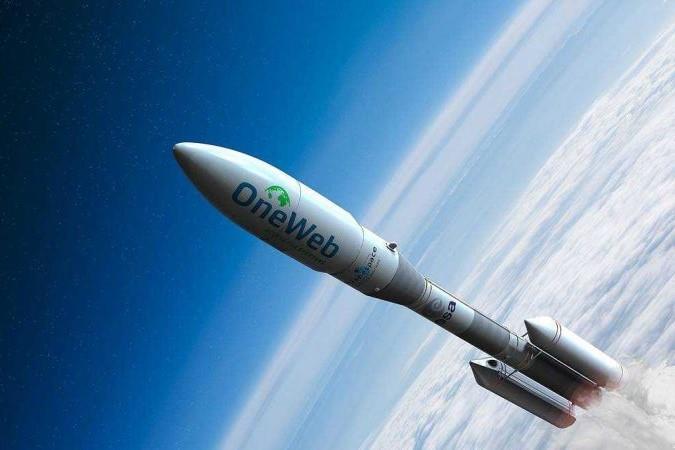The launch of something completely different
25th Sep 2020
The British government is a decade into an overhaul of its policy and investment into space, especially in terms of launch capability. The importance of the measure for Britain’s aerospace industry is on a par with the government’s decision in the 1950’s to enter the launch field, decisions which led to the very successful Skylark sounding rocket as well as the shorter-lived Black Knight test ballistic and Black Prince satellite launch rockets. In between, though, most decisions defining the space industry have been at the expense of launch capacity and toward market segments such as satellite design and construction. But now, given the effort into updating legislation, the money invested, and the tremendous competition for satellite design and launch capacity building up around the world, any misstep in execution could have grave consequences. This holds true in particular in terms of security and defence matters. To that end, some recent decisions taken by the government led by Boris Johnson have industry experts scratching their head
How we got here
Britain holds the dubious distinction of being the only country to develop and then close down its own launch capacity. However, this does not mean that attention was turned away completely from rocketry and launches. The British government was actively involved in the precursors to the European Space Agency (ESA), especially in the founding of the European Launcher Development Organisation (ELDO), and it was only after repeated ELDO launches (and failures) from Woomera, Australia and the organization’s subsequent merger with the European Space Research Organisation to create the ESA, that Europe’s launch capacities were refocused on the Kourou, French Guiana, site. Moreover, Skylark, a very successful sounding rocket first designed in Britain in 1955, was in use through 2005. By the time the 441st and last example of the type had been fired, ownership of the program had passed from government hands through several private owners, including, in the end, Sounding Rocket Services, of Bristol.
British firms maintained a robust presence in the world’s space industry, even after the Skylark era closed. The burgeoning fields of telecommunications and satellite-based positioning provided an impetus for the development of space-oriented businesses. The privatization of space-related services was also increasing, and as early as 1985, US President Ronald Reagan was calling for launch services to be run by private companies. The end of the Cold War only exacerbated the issue as capacities and human resources from countries such as Ukraine in the Former Soviet Union became available in the West. By early 2010, when President Barack Obama announced that government-owned space launch development would be almost completely ended, there should have been no surprise to observers as to the direction the industry was taking.
The return to launch
Formally, the British effort to use the American shift away from government-sponsored launch to its own benefit took shape in the first half of David Cameron’s government with the November 2011 publication of A UK Space Innovation and Growth Strategy 2010 to 2030. The document was ground-breaking in that it featured, albeit at a high level, government support of commercial small satellite launch capacity among the country’s goals in space. This is in contrast to the previous document, UK Civil Space Strategy: 2008 – 2012 and beyond, which did not include a single use of the word ‘launch’ in its 40+ pages.
This does not mean that the British government was caught flat-footed. On the contrary, the relatively short-horizon 2008-2012 report published under Labour’s Gordon Brown was barely a year old when preparations for a sea-change started in earnest. In June 2009, Lord Drayson led the opening of the Space IGS process with input from academia, government and industry leaders to shape the country’s future space effort.
The 2011 strategy the Space IGS team created carried few specifics, but raised many tantalizing questions and offered high level use cases – tourism and security, writ broadly, among them. Importantly, the authors of the strategy emphasized that the role of government was in ensuring the use and resilience of space services in the operation of both terrestrial and space infrastructure and security systems. Industry was envisioned as the driving force for determining what those needs are in the first place.
Having publicly declared the new course, the government needed to chart it, and Space Innovation and Growth Strategy: 2015 Update laid out the details of the Cameron government’s intent. In particular, and again in response to academia and industry input, the vision for the role of launch capability began to take shape. Upending decades of policy now made commercial sense in the face of increasing foreign competition, from both government and commercial operators. The UK is to offer a complete cycle of small-satellite services, covering design and financing through construction and launch to operations and maintenance. The justification for spending millions of pounds of government revenue was made clear as well.
The case made in 2015 was simple. The average economic output of the space industry on a per worker basis was three times higher than the UK average. The UK space industry was worth £11.8 billion in 2013 prices, and accounted for 6% of the global space industry. Moreover, the existing strengths of Britain’s space industry, such as small satellite design and construction, satellite-based telecommunications, and control were areas projected to grow through 2030. Also, Britain’s contributions to ESA had already risen from £220 million per annum in 2010 to £300 million per annum in 2015, and was projected to increase to £400 million by the year 2020. The writers justified the increased expenditure based on the fact that the increased role of the UK Space Agency that the money had engendered had already brought a dozen foreign space-related companies to the UK or precipitated an expansion of their footprint in the country, and increased private sector investment. Moreover, the UK presence in ESA influenced the establishment of the agency’s European Centre for Space Applications and Telecommunications at Harwell. The long term payback, however, was an increase of the UK’s share in a projected £400 billion market in 2030 to 10%, or £40 billion per annum.
To realise the potential envisioned, the Theresa May government enacted Space Industry Act of 2018. This comprehensive overhaul of space-related legislation went beyond updating the Space Act of 1986 to fit current needs. The scope of the law now covered crimes formerly left to science fiction, such as hijacking spacecraft and carrying firearms aboard them, as well as vital if mundane activities including range control. Licensing for launch activities was introduced, launch airspace was defined, and an official launch registry was authorized.
In 2018, the UK Space Agency and other government agencies also opened the purse strings. Out of the £50 million project, £31.5 million would be available in grant funding for establishing Spaceport Sutherland, a vertical launch site on the northern coast of Scotland. A further £600,000 was earmarked for companies that could offer range control services. Other funds became available for the establishment and development of spaceports. The Secretary of State Greg Clark also announced the availability of £2 million, based on the business case, to develop horizontal launch capacity.
The launch of something completely different
Overall, the UK direction in the space industry has been clear for the past several decades. After some initial series of attempts at launching rocket-propelled vehicles, Britain set its sights on expertise in other segments, especially nurturing satellite design and construction. When the world changed and overhauling that paradigm made commercial sense, successive governments acted accordingly and in conjunction with the assessments of academia, industry, and localities. Moreover, these governments have acted with a keen eye on ensuring that expenditures, be they on funding ESA or on developing new capacities, have a solid economic foundation and are likely to be profitable.
Now, the Johnson government’s decision to spend £400 million investing in telecoms satellite and services producer OneWeb is belying that consensus-driven approach. Revelations over the summer that business secretary Alok Sharma had failed to consult with top scientific advisors before pushing through the deal personally have become only the tip of the proverbial iceberg.
Ever since the announcement of the purchase of the bankrupt company, largely in conjunction with India’s Bharti Global telecommunications company, debate has continued regarding the return on investment. While some industry observers concede that OneWeb has made progress in terms of mass-producing satellites, the price tag for such knowledge has been steep. Also, the technology behind using low-earth satellites for positioning is unproven, though technically possible – if one trebles the number of satellites available in order to get a position fix, compared to the single unit providing communications. That raises hardware costs for each unit launched, and even so, there’s no guarantee that the United Kingdom’s security will be increased.
The latest twist in the OneWeb saga runs completely counter to both UK policy and the effort spent on developing UK launch and satellite capacity. The US-based company announced the release on 21st September of a new launch schedule starting in 2021. No British-based launches were announced. Furthermore, the company’s launches on ESA were curtailed and new launches from French Guiana on board Soyuz rockets were scheduled. In essence, the Johnson government is paying lip service to the development of the UK space industry, while paying in pounds to the Russians instead. British satellite design construction, touted as a strength by governments from both major parties, gains relatively little in terms of know-how or business.






Thank you for your comment! It will be visible on the site after moderation.